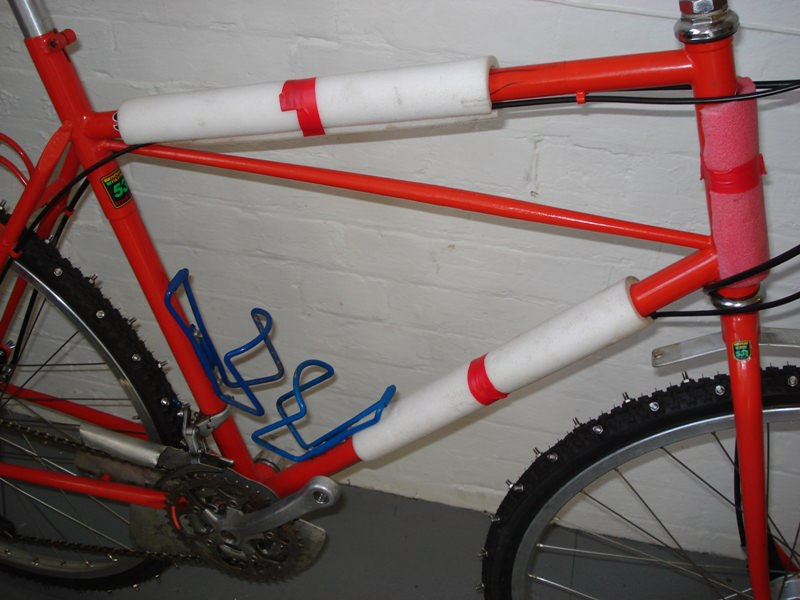- Feedback
- View
History would suggest otherwise as the point at the top of the seat tube, where the other tubes are joined, proved to be the structural Achilles heel of the Cleland bicycles. For a period David Wrath-Sharman was kept busy repairing fractured seat tubes by brazing in thicker tubing where the seat-tube passes through the chain-stay, brace and top-tube cluster. I can see that he has done this to RR-01 though this may well have been carried out as a preventative measure and not a repair.REtrouble":jcm5awxk said:The dropped top tubes on the Snowdon bike are interesting but I guess ultimately not as strong meeting the seat tube where they do.
Partly this weakness was connected with the fact that lightweight micro-adjusting seat pins longer than 170mm were impossible to obtain in the mid 1980s. As a result seat-pin insertion, especially with taller riders, was often inadequate. There was also a metal fatigue issue in this area related to the flexing of the tube when the quick release bolt was tightened and loosened.
The bikes that did not have any problems with this issue seem to be those:
*that were ridden by shorter lighter riders or were maybe abused less.
*those that were fitted with the longer seat-pins that soon became available.
*and those with larger frames that had slightly dropped top tubes. (This is probably because the miss alignment of the top-tube and seat-stays helped to brace the seat-tube and prevented it bending as much under load).





